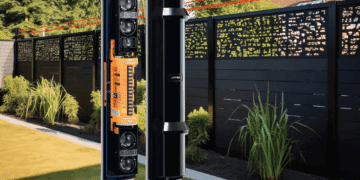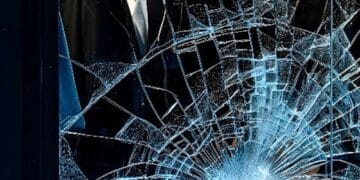OPTEX products are built on the ideas and dedication of many brilliant engineers who continually push boundaries. Among them is Mr. Masahito Iwasawa, a driving force behind several core technologies that have laid the foundations for many of its products, including the double conductive shielding and the development of REDSCAN using LiDAR.
From a young age, Iwasawa displayed a natural curiosity for science. In junior high, he helped revive his school’s dormant Faculty of Science, not just to explore astronomy, but also to create a space for hands-on experimentation with electronics and music. From building circuit diagrams for guitar effectors to borrowing lab equipment for his projects, his early experiences laid the foundation for a career defined by problem-solving and innovation.
In this interview, OPTEX explores how his curiosity, persistence, and unique approach to problem-solving reflect the spirit shared across OPTEX and are an inspiration for future generations of engineers.
Thank you for your time today. Mr. Iwasawa, can you tell us about your early developments at OPTEX?
After joining the company, I obtained my first patent for a technology called the “double conductive shielding.” At that time, there was a problem with passive security sensors falsely alarming when car lights hit them because the sensors were very sensitive.
My boss told me to “think about something.” It was a fantastic opportunity; there were no specific instructions, so it was pure trial and error. I tried layering the filter on the element or breaking the element to change it.
When I was about to give up, I tried adjusting the distance between the element and the filter. Suddenly, something worked. I thought of a hypothesis and came to the theory that when light is concentrated through the lens, the strong light from car headlights gathers and accumulates heat, triggering detection. By changing the filter’s position and using two pieces, I solved the issue more effectively. This became my first patent, still used in all of OPTEX’s passive sensors for security.
After that, new technologies were developed one after another. Where did your growth as a developer come from?
In my first year, I found ideas when I was allowed to pursue what I loved. I am grateful to my boss, Mr. Sugimoto, who entrusted me with the freedom to experiment. Now I think maybe it was just easier to let me work freely.
The key lesson I learned is that some ideas cannot be reached if you wait for instructions. Even without fully understanding, you can make discoveries along the way. Superiors will support you afterward, they don’t blame you. That was the environment I thrived in.
Is it possible to grasp and deepen technology trends by oneself nowadays?
Impossible! It’s far better to listen to the thoughts of various people because your perspective is biased for the company. I organise external contacts in my mind and rely on them when needed. Remote communication has made it easier and is convenient, but it doesn’t replace deep, meaningful conversations.
How do you handle complex problems as an engineer?
Some problems seem impossible, but experienced engineers can find solutions. My approach is to always prepare a backup plan and keep thinking beyond the first solution. This mindset was also influenced by Mr. Kobayashi, who encourages considering completely different ideas, even when a plan seems resolved.
If a “big” idea arises, try a “small” one. If a “small” idea arises, try a “big” one. It may sound paradoxical, but it prevents assumptions from limiting perspective.
Certainly, can you share an example of when this approach helped you develop a major product?
Yes, I can. That’s exactly how it was when I developed the laser scanning sensor REDSCAN, which has become a flagship product in security sensors. While on a business trip to the United States, I asked Mr. Koho the Head of the Security Business Division, “What are you working on now?”
At that time, I was in charge of research on elemental technologies, but honestly, I had no concrete idea yet! [laughs] However, the knowledge I had accumulated over the years came together, and I suggested, “Could we do something with a laser?” As we discussed it, a plan began to form in our minds.
I thought this might work, so I started designing a long-range laser unit. The project progressed very quickly. Afterward, we went to Canada to test the sensor in extremely cold conditions… though, to be honest, the environment itself wasn’t particularly exciting.
Finally, what advice do you have for young engineers inside and outside the company?
“Don’t listen to your boss!” he laughs. “If you take everything seriously, you’ll just wait for instructions. Today, coaching often encourages that approach, but real progress comes from using your own ingenuity.
Even if you work hard, you can’t produce amazing results all the time. It’s essential to allow space to explore, experiment, and grow. The key is never to be satisfied with the status quo; innovation requires energy, freedom, and room to think creatively.
For more OPTEX news, click here






